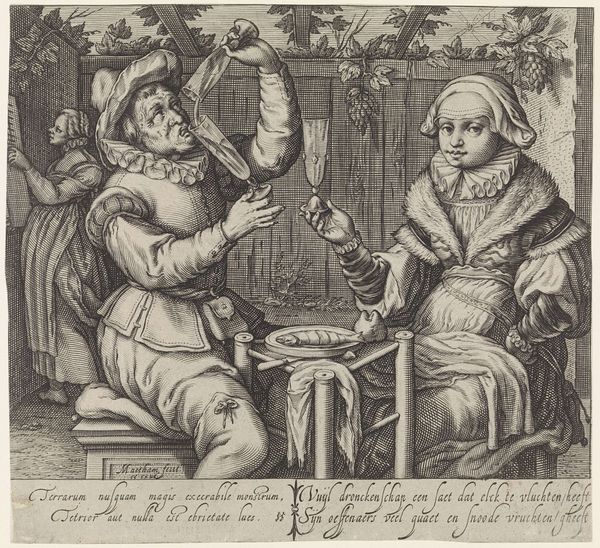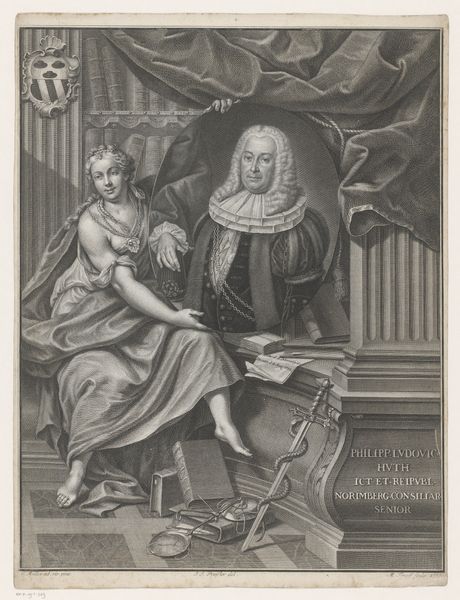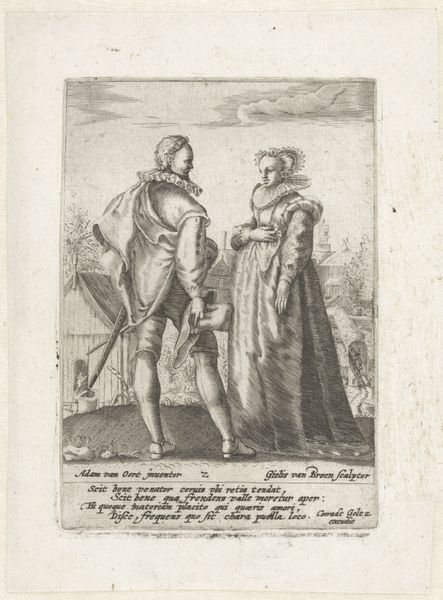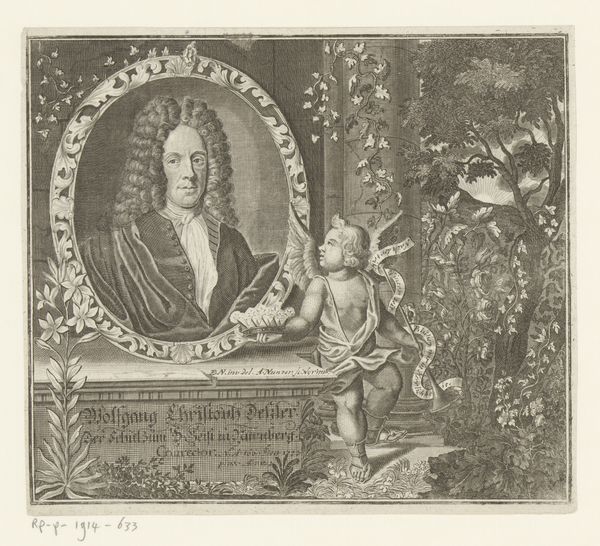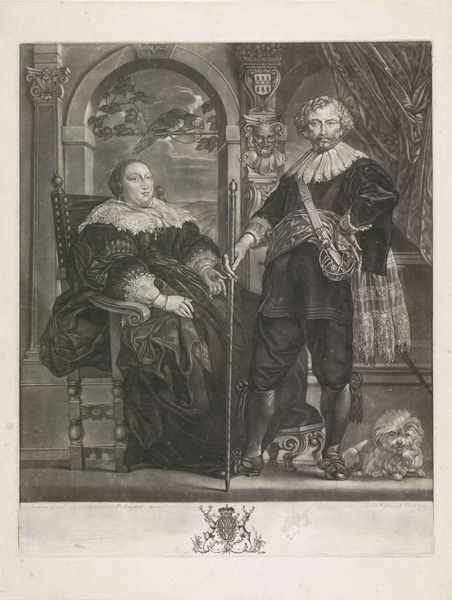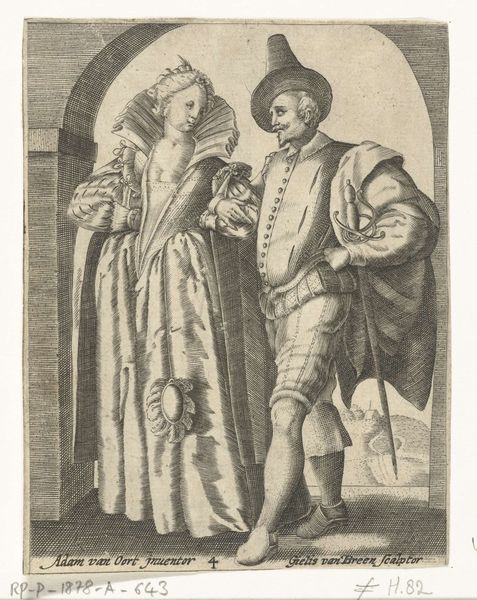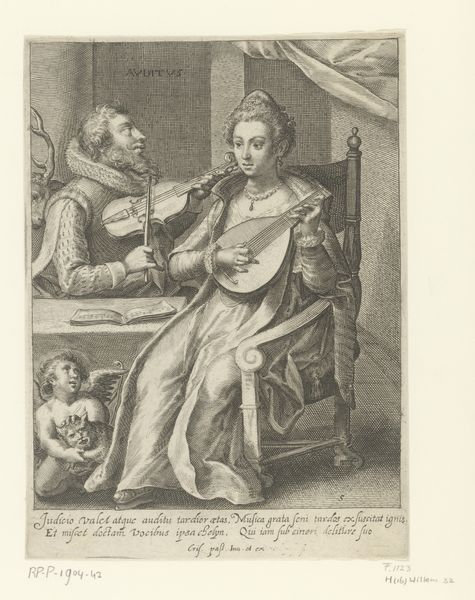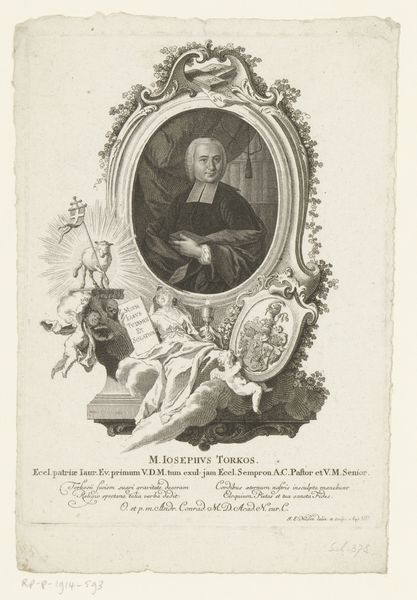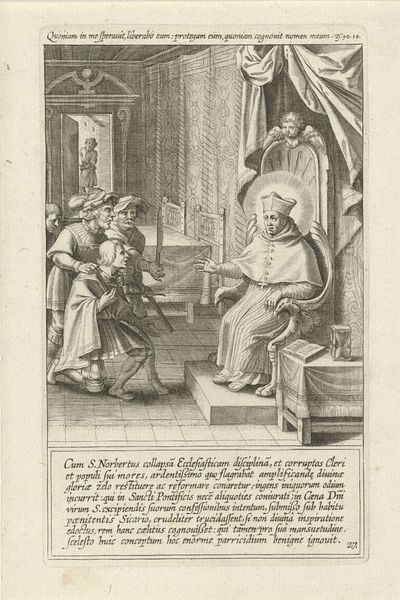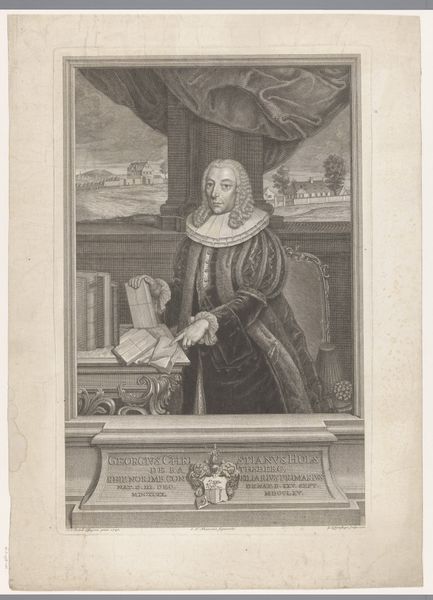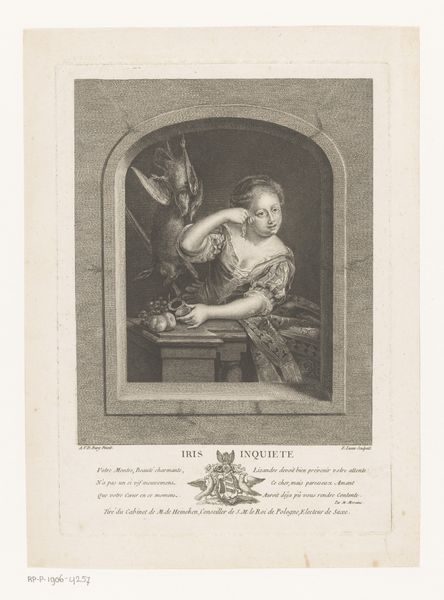
Niels Jacobsen, Borgmester og hans Hustru Maria Lasson. 1726 - 1757
0:00
0:00
print, engraving
#
portrait
# print
#
group-portraits
#
history-painting
#
academic-art
#
engraving
Dimensions: 124 mm (height) x 143 mm (width) (plademaal)
Editor: So, here we have "Niels Jacobsen, Borgmester og hans Hustru Maria Lasson," an engraving from between 1726 and 1757, currently housed at the Statens Museum for Kunst. What immediately strikes me is the formality and deliberate symbolism of this piece, like a snapshot into a very specific moment of societal representation. How do you read the significance of this particular image within its historical context? Curator: Precisely. Consider the period; this engraving reflects the emerging power of the bourgeoisie. The presence of specific iconography alludes to law and commerce and served as public assertion. Editor: Can you tell me a bit more about that public role, about how art and politics might be entwined in this piece? Curator: Notice the scales of justice to the left and commercial tools on the right: symbolic indicators of social role. The setting becomes a declaration. Odvardt Helmoldt de Lode, as the engraver, frames Jacobsen and his wife Maria as pillars of their community. Are they truly such or is the museum visitor to read this image of prominence to see these symbols in place? Editor: That’s fascinating, framing their image like a document. Was this piece, a "snapshot," perhaps propaganda or record keeping? How might a museum shape how this historical record functions as history-telling? Curator: Absolutely! The artwork operates on multiple levels. As an engraving, it serves as a reproductive medium, amplifying the subjects' influence and legacy. And, it does record history... How the couple WANTED to be seen, which may differ wildly. So, the very placement in a museum enshrines that view as *the* official view. We need to read beyond surface appearance in our cultural institutions. Editor: So the artwork's in conversation with society and vice-versa. Thank you! Curator: Indeed, considering an artwork’s reception alongside its creation deepens our understanding.
Comments
No comments
Be the first to comment and join the conversation on the ultimate creative platform.
